Diabetic-Friendly Foods: What to Eat and What to Avoid
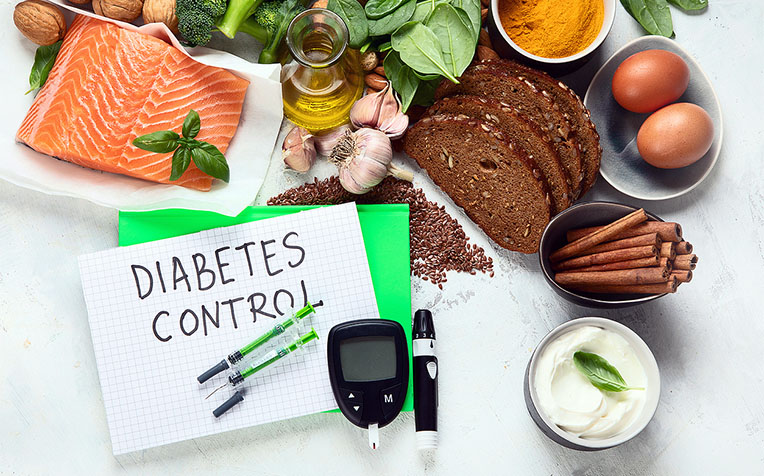
Diabetes: What To Eat
Managing diabetes effectively requires a balanced approach to diet, exercise, and medication. Whether you have Type 1, Type 2, or gestational diabetes, your food choices play a pivotal role in blood sugar control. Eating a diet rich in fiber, healthy fats, and lean proteins, while avoiding foods that cause blood sugar spikes, can help keep your glucose levels in check and prevent long-term complications.
In this guide, we’ll explore the best diabetic-friendly foods, foods to limit or avoid, and practical tips for eating out. By making informed choices, you can enjoy a healthy, fulfilling life with diabetes.
What is the Best Food to Eat Out with Diabetes?
When managing diabetes, it’s essential to focus on balanced meals that help stabilize blood sugar and provide essential nutrients. Below are some smart food choices to consider when planning your meals:
1. Choose Lean Proteins
Proteins are key to managing blood sugar because they help slow digestion, which prevents sudden spikes in glucose levels. When selecting proteins, opt for lean, grilled, or baked options that aren’t breaded or fried to keep your meals healthy.
- Great Options:
- Grilled chicken, fish, tofu
- Eggs, paneer (not fried or breaded)
- Steak or lamb (in moderation)
- Why it Works: Lean proteins provide sustained energy and help stabilize blood sugar without causing rapid spikes, ensuring better blood glucose control.
2. Go for Non-Starchy Vegetables
Non-starchy vegetables are not only low in calories and carbs, but they are also packed with fiber that helps slow down the absorption of sugars into the bloodstream. These vegetables are crucial for maintaining blood sugar balance.
- Great Options:
- Salads with olive oil dressing (avoid sugary dressings and croutons)
- Steamed broccoli, spinach, zucchini, asparagus, mushrooms
- Why it Works: These vegetables have minimal impact on blood sugar levels and are loaded with essential nutrients like vitamins, minerals, and fiber, which are great for overall health.
3. Pick Complex Carbs (in Small Amounts)
While carbs are an important part of your diet, choosing the right kind is essential for blood sugar management. Complex carbohydrates are digested slowly, providing you with steady energy without causing sugar spikes. Portion control is key here.
- Great Options:
- Brown rice, quinoa, lentils, chickpeas, whole grain roti
- Sweet potatoes (baked or roasted)
- What to Avoid: Stay away from white bread, naan, fries, and large portions of white rice. These foods have a high glycemic index, which can lead to rapid spikes in blood sugar.
- Why it Works: Complex carbs digest at a slower rate, helping to maintain steady blood sugar throughout the day and avoid the sugar rollercoaster that refined carbs can cause.
4. Add Healthy Fats
Healthy fats are essential for controlling blood sugar levels. When combined with carbs and proteins, they help to stabilize blood sugar and improve insulin sensitivity. Adding moderate amounts of healthy fats to your meals can also help reduce hunger and keep you full longer.
- Great Options: Avocados, olives, nuts, seeds, olive oil, coconut milk (in small amounts)
- Why it Works: Healthy fats help regulate insulin sensitivity, reduce the risk of heart disease, and provide long-lasting energy, all of which are vital for diabetes management.
5. Drink Smart
Staying hydrated is important for overall health, and choosing diabetic-friendly beverages can help control blood sugar. Avoid sugary drinks that can spike blood glucose levels.
- Great Options:
- Water with lemon, unsweetened iced tea, soda water with mint
- Black coffee (no sugar or creamers)
- What to Avoid: Stay away from sweet lassi, soft drinks, milkshakes, and fruit juices. These drinks are packed with sugar and offer little nutritional benefit.
Why it Works: Drinking water and unsweetened beverages helps flush out excess glucose, keeps you hydrated, and supports kidney health, which is essential for managing diabetes.

Foods to Limit or Avoid When Eating Out
Eating out with diabetes doesn’t mean missing out on delicious meals, but it’s important to be cautious of certain foods that can quickly raise blood sugar levels. Below is a guide to the foods you should limit or avoid when dining out:
| Food to Avoid | Reason to Avoid | Smart Swap/Alternative |
|---|---|---|
| White Bread, Naan, and Pasta | These foods have a high glycemic index, causing rapid increases in blood sugar levels. | Opt for whole grain bread, roti, or whole wheat pasta. |
| Fried Items (Pakoras, Fries) | Fried foods are loaded with unhealthy fats and refined carbs, which can worsen insulin resistance. | Go for grilled, baked, or steamed options instead. |
| Sugary Sauces (Ketchup, Teriyaki, Honey Mustard) | Many sauces are hidden sources of sugar, which can cause sharp blood sugar spikes. | Ask for sauces on the side and choose sugar-free options. |
| Desserts & Milk-Based Sweets | These foods are packed with sugar and refined carbs, leading to rapid glucose spikes. | Choose fresh fruit, or sugar-free desserts if available. |
| Buffet-Style Meals | Buffet meals often lead to overeating, making it harder to control portion sizes and carb intake. | Opt for smaller portions, focus on vegetables and lean proteins. |
Smart Eating-Out Tips
When dining out, you can still enjoy a delicious meal while maintaining blood sugar control. Here are some tips to help you stay on track:
- Ask for sauces or dressings on the side: This gives you control over the amount you consume.
- Swap fries for veggies or salad: Get more fiber and fewer carbs by choosing vegetables.
- Split portions or take half home: Restaurants often serve large portions, so splitting your meal helps control calories and carbs.
- Eat slowly: This gives your body time to manage sugar levels and signals when you’re full.
- Stick to water: Avoid sweetened drinks, as they can quickly spike your blood sugar.
What Food Should a Diabetic Eat and Avoid?
Managing diabetes through diet is all about focusing on nutrient-dense foods that support blood sugar regulation while avoiding foods that cause spikes. Here’s a breakdown of what you should eat and what to avoid:
Best Foods for Diabetics to Eat
Managing diabetes is all about making the right food choices. The goal is to stabilize blood sugar levels while providing the body with the nutrients it needs for energy and overall health. Here are some of the best foods that can help control diabetes and keep blood sugar in check:
| Food Category | Best Foods | Why It Works |
|---|---|---|
| 1. Non-Starchy Vegetables | Spinach, kale, broccoli, cauliflower, cucumber, bell peppers, zucchini | High in fiber and low in carbs, which helps stabilize blood sugar levels without causing spikes. |
| 2. Lean Proteins | Chicken, turkey, tofu, paneer, eggs, fish (especially salmon and sardines) | Protein is digested slowly, helping to keep blood sugar stable and promoting fullness throughout the day. |
| 3. Healthy Fats | Avocados, nuts, seeds, olive oil, coconut oil | Helps reduce insulin resistance, stabilizes blood sugar, and provides long-lasting energy. |
| 4. Low-Sugar Fruits | Berries (e.g., strawberries, blueberries), guava, apple (with peel), kiwi | These fruits are rich in fiber and vitamins, with a low glycemic index, meaning they raise blood sugar slowly. |
| 5. Whole Grains and Legumes | Brown rice, quinoa, oats, barley, dal, chana, rajma | High in fiber, these foods digest slowly, preventing sudden blood sugar spikes. |
| 6. Good Carbs (in Moderation) | Sweet potatoes, carrots, beets (not fried or candied) | These complex carbs digest slowly and offer steady energy without causing blood sugar spikes. |
| 7. Low-Fat Dairy | Greek yogurt, toned milk, unsweetened almond or soy milk | Low-fat dairy helps regulate insulin levels and provides calcium, protein, and other essential nutrients. |

Foods Diabetics Should Avoid or Limit
Managing diabetes effectively involves making smart food choices, and part of that is knowing which foods to limit or avoid. Some foods can spike blood sugar quickly, leading to potential complications over time. Here’s a quick guide to foods that should be eaten sparingly or avoided:
| Food to Avoid | Why to Avoid | Smart Swap |
|---|---|---|
| 1. White Rice, White Bread, and Pasta | High glycemic index, causing rapid blood sugar spikes. | Choose whole grains (e.g., brown rice, quinoa, whole wheat bread) to stabilize blood sugar. |
| 2. Sugary Drinks (Sodas, Fruit Juices) | Pure sugar with no fiber, leading to sharp spikes in blood sugar. | Opt for water, unsweetened iced tea, or sparkling water with lemon or mint. |
| 3. Sweets and Desserts | Loaded with refined sugars and empty calories, causing significant blood sugar increases. | Choose sugar-free or low-glycemic desserts, or enjoy fresh fruit with Greek yogurt. |
| 4. Packaged Snacks (Chips, Cookies) | High in trans fats, sodium, and refined carbs, increasing insulin resistance. | Choose nuts, seeds, or veggie sticks with hummus for a healthy snack option. |
| 5. Fried Foods | High in unhealthy fats and calories, contributing to weight gain and worsening insulin resistance. | Go for grilled, baked, or steamed foods like baked sweet potato fries. |
| 6. Flavored Yogurt | Often contains added sugars, which spike blood sugar. | Choose plain Greek yogurt and add your own fresh fruit or a drizzle of honey. |
| 7. Fruit Juices and Dried Fruits | Concentrated sugar in fruit juices and dried fruits can lead to rapid blood sugar spikes. | Stick to whole fruits like berries, kiwi, or apples (with peel). |
Diabetic Plate Method (Easy Guide)
One simple way to ensure a balanced diabetic meal is by following the Diabetic Plate Method:
- ½ plate: Non-starchy vegetables (e.g., leafy greens, broccoli, zucchini)
- ¼ plate: Lean protein (e.g., grilled chicken, tofu, eggs)
- ¼ plate: Whole grain or starchy carb (e.g., brown rice, sweet potatoes)
- Add: 1 tsp healthy fat (e.g., olive oil) and 1 small fruit (optional)
Final Word: A Diabetic Diet Isn’t Restrictive, It’s Empowering
Living with diabetes doesn’t mean giving up your favorite foods; it’s about making smart choices, balancing your plate, and focusing on whole, nutrient-dense foods that stabilize your energy and blood sugar levels.
By following these simple guidelines and using the Diabetic Plate Method, you can enjoy meals out and at home while keeping your blood sugar in check and preventing complications.
Written by:
Dr. Laura Chen, MD, Endocrinologist
Dr. Laura Chen is a board-certified endocrinologist with over 15 years of experience specializing in diabetes management. Her expertise lies in helping individuals with diabetes maintain stable blood sugar levels through personalized nutrition, exercise, and medical care.
Reviewed by:
Michael Tan, RD, Registered Dietitian
Michael Tan is a registered dietitian with over 10 years of experience helping individuals with diabetes achieve their health goals. He specializes in diabetic meal planning, offering guidance on what to eat to control blood sugar and prevent complications.
References
- Diabetes Daily Tips. Gestational diabetes: A complete guide for expecting mothers.https://diabetesdailytips.com/gestational-diabetes-a-complete-guide-for-expectant-mothers/
- Harvard Health Publishing. A good guide to good carbs: The glycemic index. Harvard Health Blog. https://www.health.harvard.edu/healthbeat/a-good-guide-to-good-carbs-the-glycemic-index
- American Diabetes Association. (n.d.). Food and blood glucose. https://diabetes.org/food-nutrition/food-blood-sugar


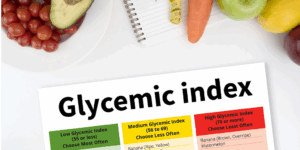
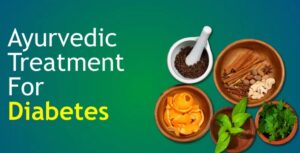
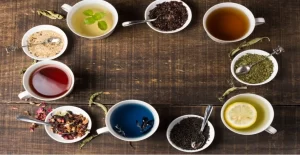


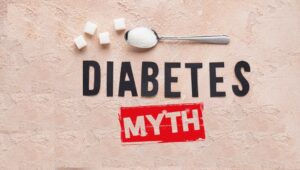
1 thought on “Diabetic-Friendly Foods: What to Eat and What to Avoid”